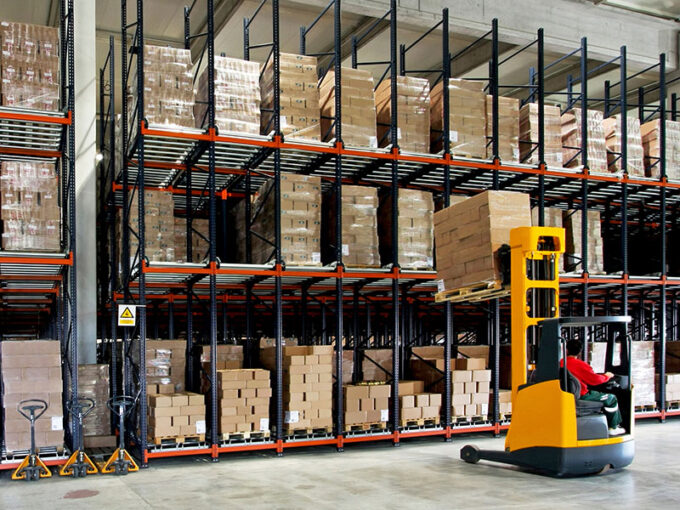Every company involved in shipping — which is most of them — experiences risk in transporting products from here to there. However, businesses responsible for managing a cold chain, which must keep goods at precise temperatures for the duration of storage and shipping, have even greater risks to identify and avoid to ensure safe, high-quality products for their customers.
The entire list of challenges facing the cold chain might be endless and will certainly depend on the types of goods a business deals in. However, all cold chain companies will need to consider the following common challenges to the safety of goods:
1. Vehicle Breakdown

Though regular maintenance can radically reduce the likelihood of major problems, vehicles can and do experience unexpected breakdowns. Unfortunately, when this occurs within the cold chain, goods must be transferred immediately to a new vehicle with appropriate refrigeration capabilities — or else they are apt to steadily heat up to unacceptable temperatures. More often than not, a vehicle breakdown results in a complete loss, as new vehicles can rarely reach the broken-down vehicle before damage occurs.
2. Hardware Breakdown
Sometimes, a vehicle will continue functioning as expected — moving freight from point A to point B — but some component of the hardware will break down, compromising the cold chain.
Refrigeration units are not the most reliable equipment and tend to require as much maintenance as the vehicles on which they are placed. As with vehicle breakdowns, hardware breakdowns can result in a destroyed load, but with the right notice from temperature indicators, drivers may be able to intervene and resolve the breakdown before damage occurs.
3. Condensation

Coolers and freezers of all types experience issues as a result of condensation. Both the surrounding environment and products themselves can increase the level of moisture in the air, which will then settle onto goods and inside equipment as dew and frost.
Some goods are adversely affected by excess moisture, especially if that moisture then freezes at exceedingly low temperatures. At the very least, condensation can make shipping and storage containers slippery, putting workers at risk of falling and causing damage to themselves or surrounding goods.
4. Heat Exposure
When goods are meant to remain cold for the duration of shipping and storage, even a single exposure to high temperatures can cause damage. Excessive heat exposure is not uncommon, especially during loading and unloading when goods are subject to outside temperatures.
Businesses should do as much as possible to reduce the time goods spend in uncontrolled areas, which might mean designing drive-through docks that allow reefer trucks to unload directly into refrigerated storage units.
5. Temperature Fluctuations

Worse than extreme heat or extreme cold, in many cases, is fluctuating temperature. When temperatures are not stable, certain materials will experience frequent expansion and contraction that can radically reduce their quality for the end user and in some cases make the goods utterly worthless.
To understand the range of temperatures experienced during shipping or storage, businesses might make use of cold chain technologies with both warm and cool thresholds.
6. Microbial Growth
A constant threat to the cold chain is the growth of mold and mildew, which can take over shipping and storage containers that are not adequately clean and temperature controlled. Generally, mold and mildew proliferate in moist spaces kept above freezing, which can develop if freezer doors are not functioning properly.
In addition to routine maintenance, shipping and storage containers should be cleaned regularly to prevent the buildup of microbial contaminants that might feed mold and mildew.
7. Packaging Problems

If goods are not appropriately protected in the correct packaging, they are more likely to sustain a variety of types of damage as they progress through the cold chain.
Proper packaging can protect goods from excessive heat and cold, from moisture, from shocks and impacts and more, which can reduce the threat of other logistical issues on this list. Shippers need to experiment with different types of packaging to ensure they are providing safety and security to their goods at their price point.
As mentioned above, these are not the only risks facing shippers or carriers working in the cold chain, but they are significant concerns that can and should influence cold chain strategy.
8. Tracking and Monitoring Challenges

One of the most common logistics challenges impeding the success of cold chains is tracking and monitoring. Without accurate tracking and monitoring, it is not possible to meet even the most basic requirements for maintaining an efficient cold chain.
Tracking begins with sourcing raw materials that have been stored and handled in a manner that maintains their original temperature and integrity, followed by packaging solutions that best preserve their temperature-sensitivity during transportation.
Monitoring refers to regularly measuring the internal temperatures of goods during each part of the journey, while ensuring they remain within the required range according to required food regulatory standards.
This includes during storage at warehouses, transit in refrigerated trucks (with real-time tracking capability), delivery to retailers, and Retailers monitoring throughout display/storage at stores.
Accurate tracking requires sophisticated data systems capable of recording temperatures taken from various points along your supply chain and syncing this data with your existing inventory records.
Businesses must account for any variation in temperature or sudden shifts between storage points as these irregularities can have an impact on product quality which can decrease shelf life significantly or even make products unsafe for consumption.
Conclusion
By developing an effective cold chain solution that takes into account end-to-end oversight, you can enable better visibility regarding product movements between companies in the supply chain; increase efficiency in transportation scheduling; ensure proper storage of goods, and eliminate cost overruns due to shipping delays.
Ensuring proper cold chain management requires the participation of all parties involved. Companies must work together closely with their partners—from those involved with processing orders to those responsible for warehousing or transportation—to outline a comprehensive approach to managing outbound logistics from production stages through delivery.
With a successful strategy in place, companies will be well-equipped to tackle any logistical challenges that may arise during the length of their operations.








